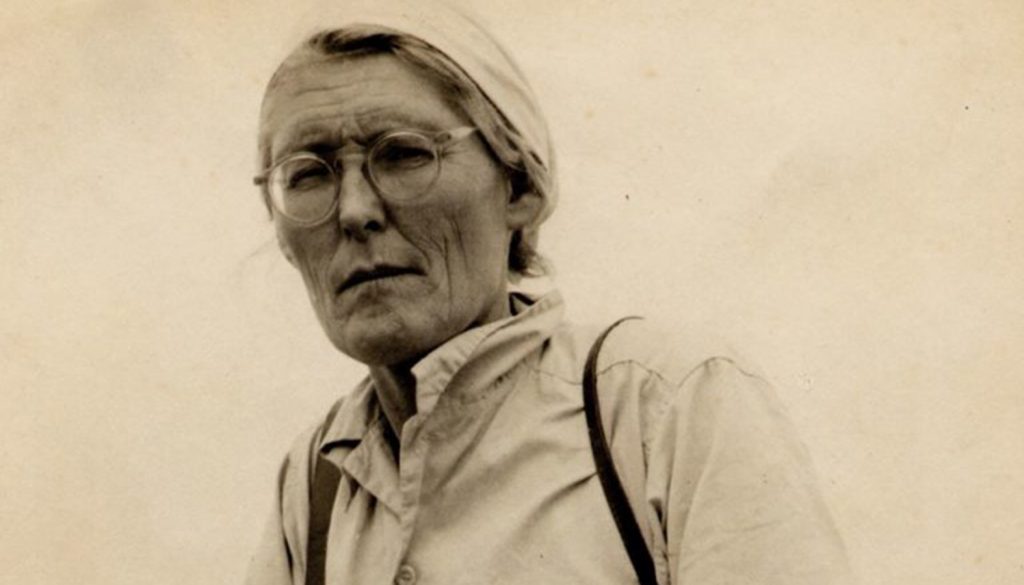I get a kick out of those “militant feminists” who, while being supported by wealthy husbands, lecture their single, self-supporting sisters about the need to overthrow the patriarchy.
I’m way more impressed by women who actually live by themselves, forge their own way, seek a creative outlet into which to channel their energies, and go full-speed ahead without the slightest interest in informing others how they should live their lives.
To that end, I’ve discovered a compelling figure: Maria Reiche (1903-1998).
A German mathematician and geographer who went to the desert in Peru, Reiche devoted her life to a series of strange and mysterious geoglyphs — animals, geometric figures, mythical creatures — drawn into the sand approximately 2,000 years ago, and that can only be seen in their entirety from the air.
The Nazca Lines, as they’re called, are located in the Peruvian coastal plain about 250 miles south of Lima.
The plain, called the Pampa de Ingenio, is covered with a thin layer of red pebbly soil into which a line incised with, say, a stick, might remain intact for centuries.

Reiche was neither the first to discover the lines nor to wonder about them. A graduate of Hamburg University with a degree in mathematics, and a pacifist whose father had been killed on the front in World War I, she had gone to Peru in 1932. She taught math for seven years in Lima, then met Dr. Paul Kosok, an American professor and historian, who was studying and had become fascinated by the Nazca Lines.
When he shared his discoveries with her, and suggested that Reiche put her knowledge of astronomy to work, she knew she had found her vocation.
In 1941, Kosok had chanced upon one explanation. The day he discerned the first huge figure happened to be June 21. He realized that the three largest oscillating lines in the first piece pointed in a solstice direction.
That, however, was only the beginning. In 1975 Bruce Chatwin, the late English explorer and travel writer, journeyed to Peru and wrote the essay “Maria Reiche: Riddle of the Pampa.”
As Chatwin put it, “other questions troubled [Kosok]. What was the point of this colossal creation when its makers, who did not have the aeroplane, could never have seen [the figures] properly? How could a people of simple peasants and warriors have mastered their superlative surveying technique without knowledge of higher mathematics?”
Enter the splendid Maria Reiche. In 1949, she wrote and self-published a book of text and grainy photographs called “Mystery on the Desert.” Though it’s long out-of-print, you can wangle a used copy with translations in both English and Spanish alongside the original German.
In it, she seconded the solstice theory, noting that December is a month of expectation in Nazca. “People watch eagerly the dry riverbeds, which are due to fill with water that can be conducted over the fields to cover again the dry, barren lands with luscious green.” The drawings were perhaps, as Dr. Kosok named them, “the largest astronomy book of the world.”
From Chatwin’s description, Reiche was a kind of female John the Baptist. Her skin was lined and furrowed by the sun. She slept outside on a bed of stones. She ate sparingly — bananas, quince paste, powdered milk, tuna.
Reiche theorized that the Nazca used a standard measurement, perhaps an arm span, with which to construct their lines, but after 40 years, she was beginning reluctantly to admit that she might never fully discover their secrets and mysteries.
Still, “I feel things germinating inside me all the time. And at my age!” she reported. “But then I was very barren as a girl.”
She never married and was by all accounts completely content and happy alone out there in the desert, sweeping away with a mangy broom and baking in the sun. She achieved legendary status among the Peruvian locals, who viewed her as an eccentric, possibly mad, a recluse, an old lady on an aluminum stepladder measuring the stars.
In fact, Chatwin found her to be “one of the most hard-headed and least mystical people” he had ever met. “I do not care for the Bible,” she said. “So much that is impenetrable. The world would be far better without it. If only we could abolish superstition!”
The Pampa is fragile: Even in 1975, the lines were in danger of destruction by buses, motorbikes, and planes. Preservation was proving to be a bureaucratic nightmare.
Reiche stayed out in the desert for 50 years. She refused to quit even when in a wheelchair and going blind. She died of ovarian cancer in a Lima hospital in her mid-90s, and is buried beside her sister in the desert where she lived and worked.
The Nazca Lines were designated a UNESCO World Heritage Site in 1994. Reiche’s house has been made into a museum. An association, upon which information is scant, has been formed.
In time, the Nazca Lines will disappear completely. In the meantime, I can't help but think their devoted curator was wrong about one thing. Perhaps the greatest mystery of all is Maria Reiche.

